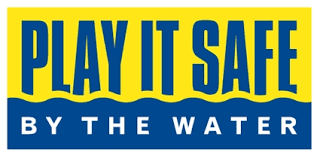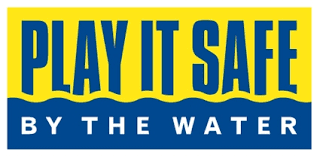 Ahhhh… don’t you love summer? On this 1st day of summer, we think it’s wise to post this article about safety around water. Whether it’s a pool, the ocean, a lake, pond or any body of water, safety is a must. As a mother and lap swimmer, I had my son in the pool at our local Y when he was an infant. Swimming lessons followed soon after. It’s extremely important you know how to swim for safety reasons because you never know when you’ll be in a life or death situation around water. As a Nurse, you’ve unfortunately seen situations with tragic outcomes.
Ahhhh… don’t you love summer? On this 1st day of summer, we think it’s wise to post this article about safety around water. Whether it’s a pool, the ocean, a lake, pond or any body of water, safety is a must. As a mother and lap swimmer, I had my son in the pool at our local Y when he was an infant. Swimming lessons followed soon after. It’s extremely important you know how to swim for safety reasons because you never know when you’ll be in a life or death situation around water. As a Nurse, you’ve unfortunately seen situations with tragic outcomes.
While many parents worry about their children’s safety around swimming pools, as they should and need to do, drowning incidents can also occur in natural bodies of water, says information from the U.S. Swim School Association.
Safety precautions need to be taken around all water environments. According to the Center for Disease Control, about half of all drowning incidents occur in natural water settings such as lakes, rivers or oceans. And, almost 75 percent of people killed in boating accidents die as a result of drowning.
As the summer boating season begins, there are steps parents can be taking to keep their children safer in the water. The U.S. Swim School Association has put together the following guidelines to help keep children safe while boating this summer.
• Make sure your children know how to properly wear a lifejacket. And always have children under 12 wear a life jacket at all times when boating or using personal watercraft.
• Personal floatation devices should always be U.S. Coast Guard approved. Never substitute water wings or other recreational type floating toys for an approved PFD.
• Create a water safety plan for your family and have water emergency drills with your children covering how to recognize the signs of someone struggling in water and what to do in this type of emergency.
• Teach your children the “throw don’t go” rescue method. Instead of entering the water to help a struggling person, teach your child to throw in a rope, reach with a stick, paddle or other object to pull the person in.
• If you take your kids on a shore excursion while boating, be aware of tides and currents and other risks the ocean or beach may have.
• Non-motorized boats can also pose a risk. If your family is canoeing or kayaking be sure your child is wearing a life jacket and knows what to do if the boat flips.
• If your child is playing near a natural body of water and accidentally falls in, teach your child to roll over on his or her back and float until help arrives if exiting the water is not an option.
• Never use floatation devices or water wings to keep your child safe in the water. Rely on your direct supervision.
Swimming lessons are a great addition to help keep your child safer while boating and around open water. For more information about swimming lessons and water safety and to find a Unites States Swim School Association member swim school near you, visit usswimschools.org.







